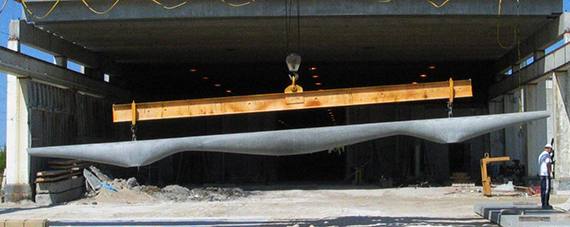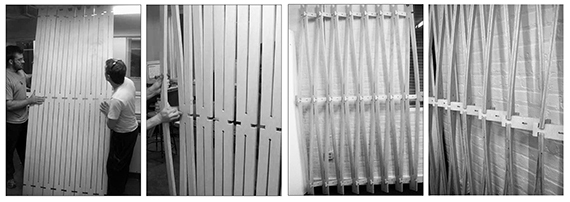To meet the challenge of sustainability, architects need to reinvent how they work.
On October 9 in New York is Architectural Record's annual Innovation Conference. This raises a question: What does innovation mean to architects?
The conference site gives no definition, but if you Google the phrase "innovative architecture," what pops up is a seemingly endless stream of exotic images--rippled rooflines, bulbous walls, spongy towers, the flights of fancy of designers the world over. Innovation equals ambitious geometry, it seems. This year, Fast Company named Zaha Hadid one of the most innovative architects "for being dedicated to bold curves." Never mind that Bernini and Borromini invented bold curves 400 years ago.
Such praise for the superficial is surprising from a business magazine, because the business world thinks about innovation very differently. Management consultant Jose Campos defines it as "the ability to deliver new value," and legendary business guru Peter Drucker called it "change that creates a new dimension of performance." An innovation is a breakthrough that creates better answers to old questions or smart solutions to new problems. Nothing is innovative if it doesn't provide practical value. And the degree of innovation actually can be quantified: "A breakthrough that lets you execute two jobs," writes Steven Johnson in Where Good Ideas Come From, "is twice as innovative as a breakthrough that lets you do only one."

A Beam Like a Porpoise. Fabric-formed concrete uses 300 times less weight in formwork material and half the concrete of an equivalent rectangular beam. (Courtesy Mark West, University of Manitoba.)
While the design industry considers something innovative if it merely looks different, business insists that innovation must produce better results. Fast Company applauded Zaha for her curves but named Google the world's most innovative company because it might "reinvent society"--a higher bar, to say the least.
Architecture itself urgently needs reinvention. Because the built environment represent about half the annual US energy and emissions and three quarters of its electricity, arguably architects are essential to achieving sustainability. But we can't do it without rethinking our habits. As Einstein famously put it, "We cannot solve our problems with the same thinking we used when we created them."
Unfortunately, the culture of design tends to stifle innovation, not stimulate it. Business innovators know that breakthroughs are bred by diversity, collaboration, open mindedness, and positive attitudes, qualities all too rare among architects, who pride themselves on individual expression and critical skepticism. Architecture firms often are rigidly hierarchical, conservative in their cultures, and all-too lacking in true diversity and collaboration. According to the Center for Talent Innovation, the potential for innovation is nearly four times greater in organizations that encourage everyone to offer ideas, support unconventional thinking, enable risk-taking, empower teams to make decisions, and share credit. Leaders who give diverse voices equal airtime are nearly twice as likely as others to unleash innovation.
While other industries are progressing rapidly by altering their values and cultures, architecture isn't keeping pace. The building industry, says sustainability leader Hunter Lovins, is "dynamically conservative--it works hard to stay in the same place."

A Wall Like An Accordion. The system unfolds a sheet of plywood to make a wall that is lighter, stronger, cheaper, more durable, and more efficient than typical 2x4 stud framing. (Courtesy Sean Dorsy.)
However, there are compelling, if infrequent, examples of sustainable innovation in architecture. For example, textile molds for concrete can be sewn like a dress, allowing the concrete itself to be poured into more fluid shapes than the typical box formwork. A beam can be formed by putting the material only where it's needed, like an animal skeleton. The result is amazingly efficient, using half the concrete of an equivalent rectangular beam and 300 times less weight in formwork. Similarly, as an alternative to the ubiquitous wood framing system, architect Sean Dorsy has developed an expandable wall system that unfolds to create an amazingly durable, origami-like frame that is cheaper, lighter, stronger, and dramatically more efficient with material than stud framing.
The porpoise beam and the accordion wall transform otherwise mundane bits of building--beams and stud walls--into something extraordinarily elegant. Imagine applying such ingenuity to every structure: How would an architecture of such dramatic innovation change the way we all live and work? Buildings could become less like cages and cities more like aspen groves or rainforests--fertile urban ecosystems, breeding grounds for greater innovation.
Ironically, while designers often create imagery for imagery's sake, applying innovation to solve real problems can produce things that look good but also work better.
